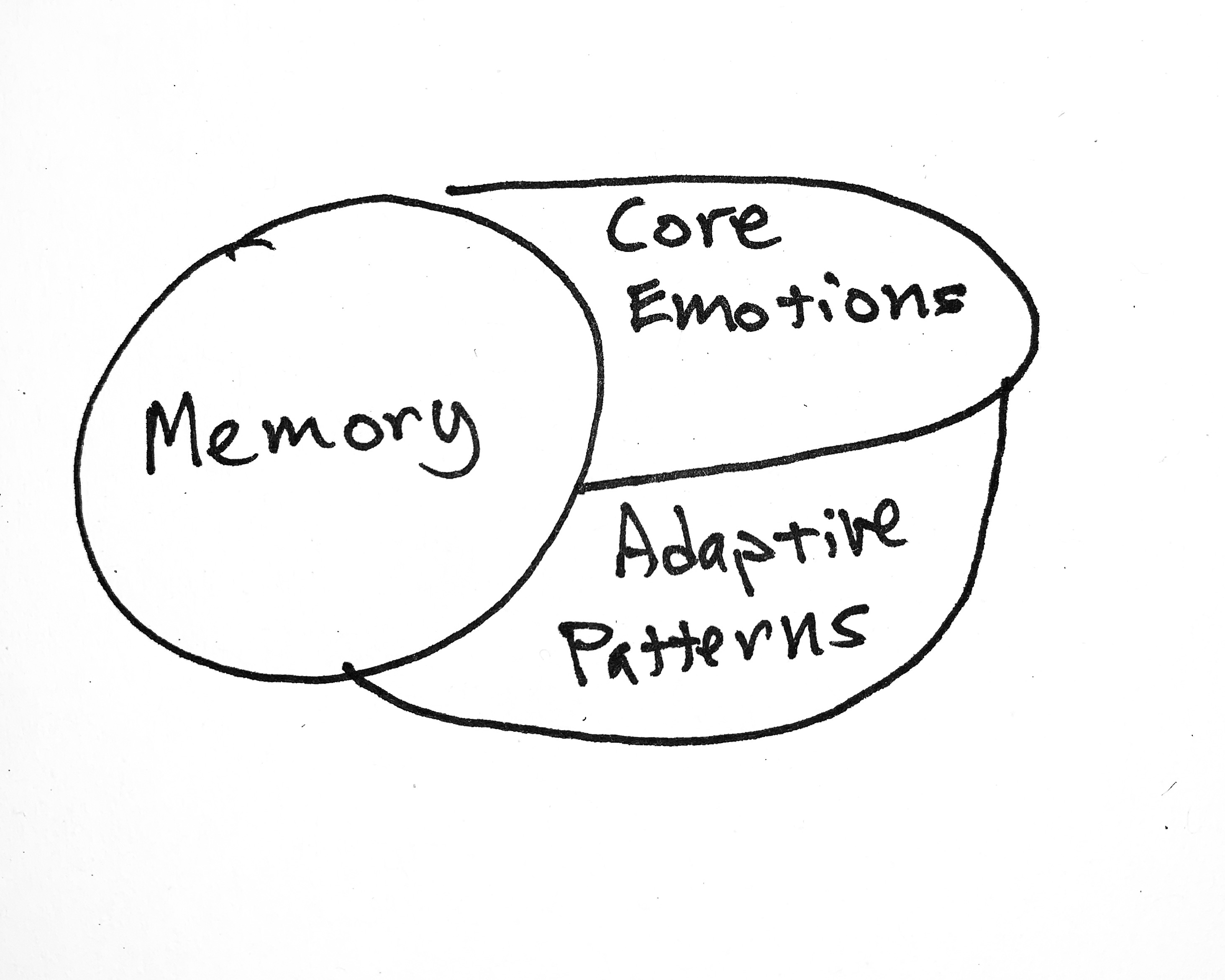Mental Note
Musings on therapy and psychological health by Avi Soudack, RP
How does psychotherapy work?
December 2024A psychotherapy client of mine put me on the spot recently. She asked: how does this work? How does my speaking with you once a week for several months change me for the better? It’s a reasonable question and one that clients have a right to have answered. So, here goes. First, let’s look at what a psychological problem is at its core. Then we can talk about how therapy is, well, therapeutic. And last, we can describe the outcome of therapy.
Roots of the problem: painful associations
The sorts of problems addressed by psychotherapy—anxiety, depression, phobias, failures in relationships, self-defeating and addictive behaviours—seem so different. But deep below the surface they are similar in one way. They are all the result of some learned association between three things: an experience or series of experiences, painful emotions and thoughts related to those experiences, and the patterns of thinking, feeling and behaving a person develops to cope with those painful associations.
Being yelled at and bullied is a painful experience that can become associated with a sense of yourself as weak, unappealing, and fundamentally lacking. Such feelings of shame may come to permeate a person’s sense of themselves. But how to live with such painful feelings? A person might respond by avoiding asserting themself, feeling anxious about social interactions as a way to avoid painful contact, and generally avoid situations which may reveal them as limited and flawed. Feelings of anxiety and being socially reserved and timid can serve to block feelings of shame. But they may also lock in the pain and block your ability to thrive and grow.

Therapeutic action: corrective experiences
Across the wide variety of types of psychotherapy and therapists’ personal styles and techniques there is one common underlying process. The associations between the memory of experience, painful feelings, and compensatory coping patterns must be broken and new associations must replace them. To break and remake associations requires, what is called in the language of therapy, a “corrective experience”.
In therapy these associations are revealed, examined, and countered. And in a miraculous memory process called “memory reconsolidation”, past memories are given new meaning. The memory does not go away; after all, the yelling and the bullying did happen, and so did the pain they caused. However, the association with a negative self-image is not immutable and the behaviour patterns used to protect that shamed self can be replaced.
There are corrective emotional experiences, corrective cognitive experiences, and corrective behavioural experiences. Here’s a behavioural example. With a fear of heights, being at a high altitude associated with the fear of falling can be corrected by exposing the association and gradually replacing it with experiences that associate height with safety. Let’s try one floor, then two, then four, then six. Each time we are exposed to the experience we make new associations. Ultimately, we don’t need the anxiety and coping behaviour of avoiding high places.
Feelings of shame which can develop in response to experiences of bullying and abuse require emotional and cognitive correction. We may think we are to blame for the bullying, that something about us is broken, that we deserve this treatment. Therapy involves identifying these painful, but ultimately flawed, conclusions. Then, and this is the kicker, we need to have an experience that contradicts our assumptions about ourselves. We need to feel valued, we need to see that the cause of our pain was an external threat and not something about us. That experience comes in the form of the relationship between client and therapist, in learning new ways of acting and interacting with others that the client explores, and creating new ways of looking at and thinking about themself.

A new relationship to memory
When we have loosened the grip of negative associations, we can replace the faulty coping patterns we use to mask our vulnerability and pain. Unwanted anxiety needs to be released; we don’t need it to protect us anymore. Drinking, smoking, and other substances can now be seen as defective defensive manoeuvres we no longer need. And, our image of ourself as flawed can be retired as a hold-over from a time when we grasped for explanations for the mistreatment we were receiving. Those emotional, behavioural and cognitive patterns were necessary responses back in the day, but they are no longer helpful.
So, this is what I told my client. Therapy is a “re-learning” process in which old associations which were helpful, perhaps because they were the only ones available, are extinguished and new ones are created. Ways of thinking and feeling rooted in painful experiences and bound together in memory need to be loosened and replaced. We do that through curiosity, self-awareness, compassion, and the hard work of learning new ways to be.

This is, of course, only a partial answer. More to come. And some interesting reading on the subject below.
Sources
Convergence Special Interest Group (2021). Toward a Common Core of Psychotherapy. Psychology Today, July 26, 2021. https://www.psychologytoday.com/ca/blog/convergence-and-integration-in-psychotherapy/202107/toward-common-core-psychotherapy-0
Kramer, U., (2021). Review of Neuroscience of Enduring Change, Lane R. and Nadel, L., eds. American Journal of Psychotherapy(74), 44–45. doi: https://doi.org/10.1176/appi.psychotherapy.20200052
Lane, R.D., et al. (2022). The role of enhanced emotional awareness in promoting change across psychotherapy modalities. Journal of Psychotherapy Integration 32(2). doi: https://doi.org/10.1037/int0000244
Marquis, Andre and Convergence Special Interest Group (2020). Corrective Emotional Experiences. Psychology Today, May 21, 2021. https://www.psychologytoday.com/ca/blog/convergence-and-integration-in-psychotherapy/202005/corrective-emotional-experiences
Smith, Jeffery and Convergence Special Interest Group (2021). Does Psychotherapy Really Have a Common Infrastructure? Psychology Today, April 30, 2021. https://www.psychologytoday.com/ca/blog/convergence-and-integration-in-psychotherapy/202104/does-psychotherapy-really-have-common>